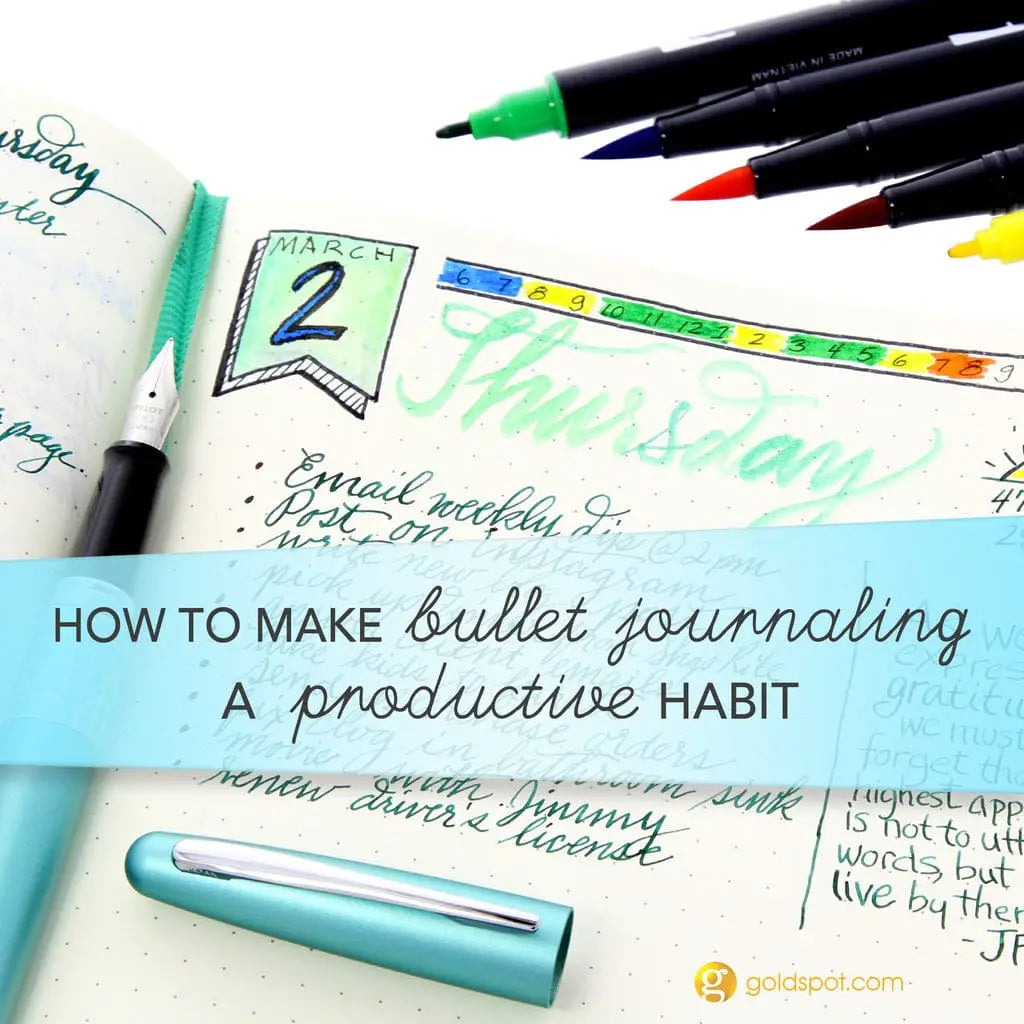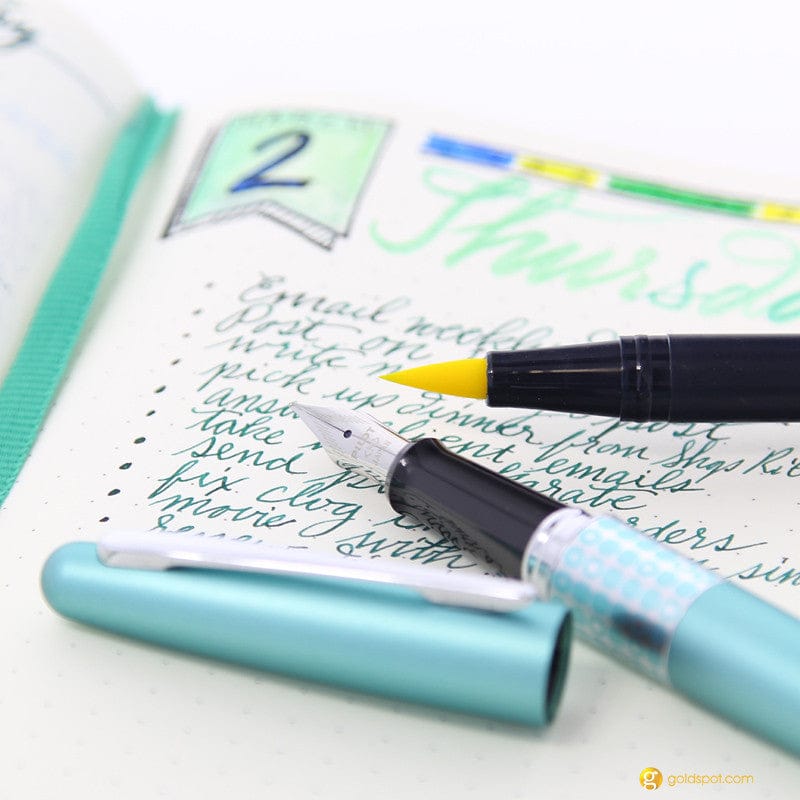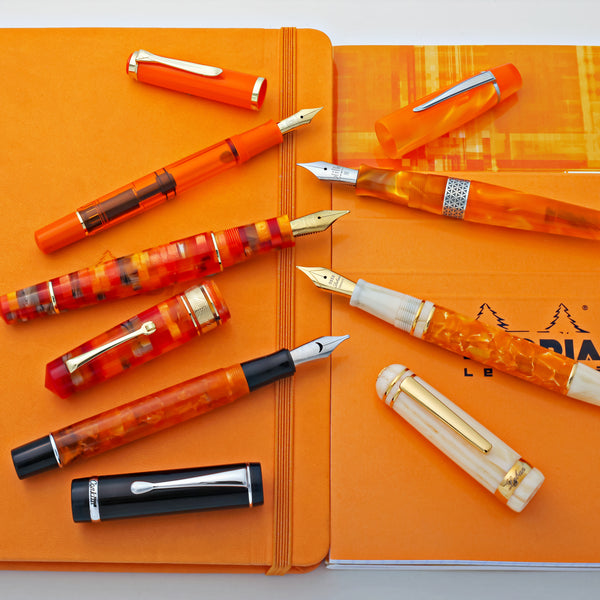How to Make Bullet Journaling a Productive Habit
If you've already consumed some information on Bullet Journaling, you may have already seen that the practice of Bullet Journaling exists on a spectrum. On one end, you have a practical, utilitarian system for managing your actionable goals while logging other significant thoughts and activities. On the other end is a wildly colorful planner peppered with stickers, stamps, stencils and finished with washi tape. Where does your journal exist on this spectrum?
Oh wait, you haven't started yet? Or you only got so far as the future log and gave up? Are you still trying to pick the perfect weekly layout?

This might be the 10th article on Bullet Journaling that you've read and the 15th video that you've watched, but we guarantee that you'll come away with far more practical information, along with the impetus to get moving on your journaling instead of constantly searching for more inspiration, layouts, ideas, and tips. Including finding the top pens for journaling, which can significantly enhance your experience by providing the right tools for your creative and organizational needs.
See, the problem you may be experiencing lies not in the technique, but in the failure in enforcing habit. So, you can read a million blogs and engorge upon the litany of information that is out there on Bullet Journaling (and there is a lot, trust me), but you'll never get to utilize the benefits of keeping a journal if you don't make it part of your daily life.
First of all, get the basics down. Forget about all the decorative supplies. There will be plenty of opportunities later for you to go crazy with Tombow brush markers, washi tape, and stickers. If you need a primer on how to use the Bullet Journal system, watch our helpful video below that uses the Leuchtturm 1917 Bullet Journal dotted notebook.
This notebook is particularly useful because it includes the basic tenets of the Bullet Journal System, including example symbol keys and layout information. With all the information printed in the book, it's a quick reference guide that you don't have to go online to view (and get side-tracked by the internet in the process).
At it's core, the Leuchtturm1917 dotted journal has the ideal dot grid format and ample paper size to contain the amount of detail that a Bullet Journal requires.
Set up
Now, once you understand how a Bullet Journal is supposed to work, take out a writing implement, find a place of quiet, tell no one to bother you for 20 minutes, lock the door, hire a babysitter, do what you have to do. Get some headspace to think and write everything down.
If you already have a calendar, write in notebooks, keep a to-do list, or have any other system that keeps useful information, bring all of that good stuff with you to your special hiding place where you can effectively set up your journal.
So you have all of these inputs - appointments, birthdays, anniversaries, "honey do" list, deadlines, goals and the like. Now that you are tucked away in your own little bubble, get to work in dumping all of these important tidbits in your journal.
If anything is time sensitive or dated, you would want to include it within your future log, monthly log, and daily logs.
If you simply have a list, like home improvement projects to tackle, books to read, podcasts to listen to, internet passwords, and such, you can list them topically per page. Dedicate a page per topic, then record it in the index for easy reference. You can always evaluate those lists later and figure out when you are going to actually address all of these things. For now, just dump them all in the journal and move on.
At the end of this writing session, you should have all the pertinent information you need in your journal that you can safely put away any other notebooks and papers you were using before and rely solely on your Bullet Journal to keep you on task. To start actually applying the journal to your life, move forward to your first Daily Log page.
DAY 1
Here's where the rubber meets the road. You've spent some time setting up your journal, but what do you do next to make sure it creates a positive change in your life?
Starting at Day 1, what are your obligations? What needs to happen so that you still have a roof over your head, food in your belly and that others who depend on you are cared for? While I would avoid writing any repetitive, general tasks like "go to work," or "eat breakfast," if you have a specific time that something routine needs to be done, note it like "12:30 pm meeting @ work with boss," or "3:00 lunch with Barbara."
Once you have your absolute necessary commitments, take a step back and look at your goals, both professionally and personally. Looking to lose weight? Want to get a promotion? Have a project that needs to be completed? A party that needs planning? These are complicated, multi-step objectives that need to be broken down into bite-sized tasks that you can list as a "to-do" in your day.
Most of the time, a complicated project needs its own page in your journal so the various tasks and progress can be tracked and evaluated. In your daily log, you would want to throw in a bite-sized task from these larger projects so you can keep the ball rolling each and every day. When I say bite-sized, I mean something that may take between 5-30 minutes to accomplish.
Taking the "lose weight" objective as an example, a bite-sized task to write in your journal's daily log is to "jog 2 miles" or "do salad meal prep."
Don't worry if all of your tasks weren't completed by the end of the day. That's going to happen. Don't beat yourself up about it. You make plans and life dashes them to pieces sometimes. Simply migrate that task to the next day or schedule it for a better time later in your future log.

Keeping up
Set a reminder once or twice a day on your phone to alert you when you should be cracking open your journal to evaluate the day's tasks. Most people like doing this first thing in the morning after waking and/or right before bed. Personally, I have my journal out on my work desk all day long, open to the current daily page so I can quickly glance at what needs to be done next. After putting the kids to bed later in the evening, I open it again to look at what else needs to be done and set up tomorrow's log.
Any good habit is enforced by faithful repetition. Doing effective Bullet Journaling creates this positive feedback loop that is evident after the first few days of seeing your accomplished tasks. You can physically track your progress as you flip through the months of small wins on every crinkly page.
When you start feeling led astray, you can always refer to your overarching goals and the items written in your future log to gain perspective and direction. Once you start to rely on the system to keep you pointed in the right direction, it will be your compass during trying times.
Now, I shall cross off "finish writing bullet journal article" from my daily log list. :-)
If you're a seasoned Bullet Journalist, please feel free to share your journaling habits in the comments below. What helps you stick to writing as a routine?



